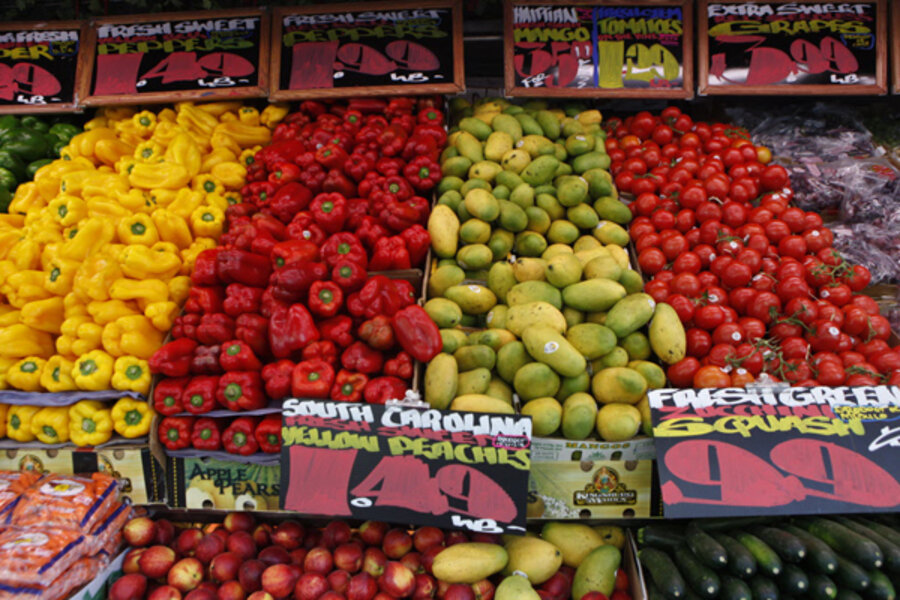How much food does one family waste?
Loading...
We’ve all been there. Who hasn’t thrown out a head of lettuce because some of the leaves are turning brown, tossed yogurt a few days past the expiration date, or scraped leftovers straight into the trash because we’re sick of chicken?
But cleaning out the fridge too often adds up. A new study found that for most Americans about $40 a month, or 33 pounds of food, ends up in the trash can.
The study by the Natural Resource Defense Council found that America is losing up to 40 percent of its food as it travels from farm to fork. That adds up to about $165 billion in food being discarded each year.
“As a country, we’re essentially tossing every other piece of food that crosses our path – that’s money and precious resources down the drain,” Dana Gunders a NRDC project scientist with the food and agriculture program said in a press statement.
“With the price of food continuing to grow, and drought jeopardizing farmers nationwide, now is the time to embrace all the tremendous untapped opportunities to get more out of our food system,” she said.
Food waste happens at all levels of the supply chain. Farmers may leave crops unharvested or discard them, simply because they don’t look “right;” such as a carrot that’s too curvy. Food is also wasted at the market when grocers overstock and pile produce high to create the appearance of bounty and surplus.
We all know the old “waste not want not,” adage, but it seems few consumers really take it heart. Today, the average American consumer wastes 50 percent more food than consumers in the 1970s.
According to the NRDC, the average American family of four ends up tossing the equivalent of $2,275 of food into the trash annually.
We throw out 40 percent of fresh fish, 23 percent of eggs, and 20 percent of milk, according to the US Department of Agriculture.
In total, the Environmental Protection Agency estimated that in 2010 the US wasted 33 million tons of food.
The NRDC points out that wasted food also means wasted natural resources. 10 percent of the total US energy budget, 50 percent of US land, and 80 percent of freshwater is devoted to food production and shipping.
The NRDC has called for the US government to study the loss within the food supply chain and to standardize expiration dates and product labels.
They also offer tips to help consumers cut back on waste at home, like planning meals ahead of time and using a list when shopping, buying misshapen fruit, and composting at home.







